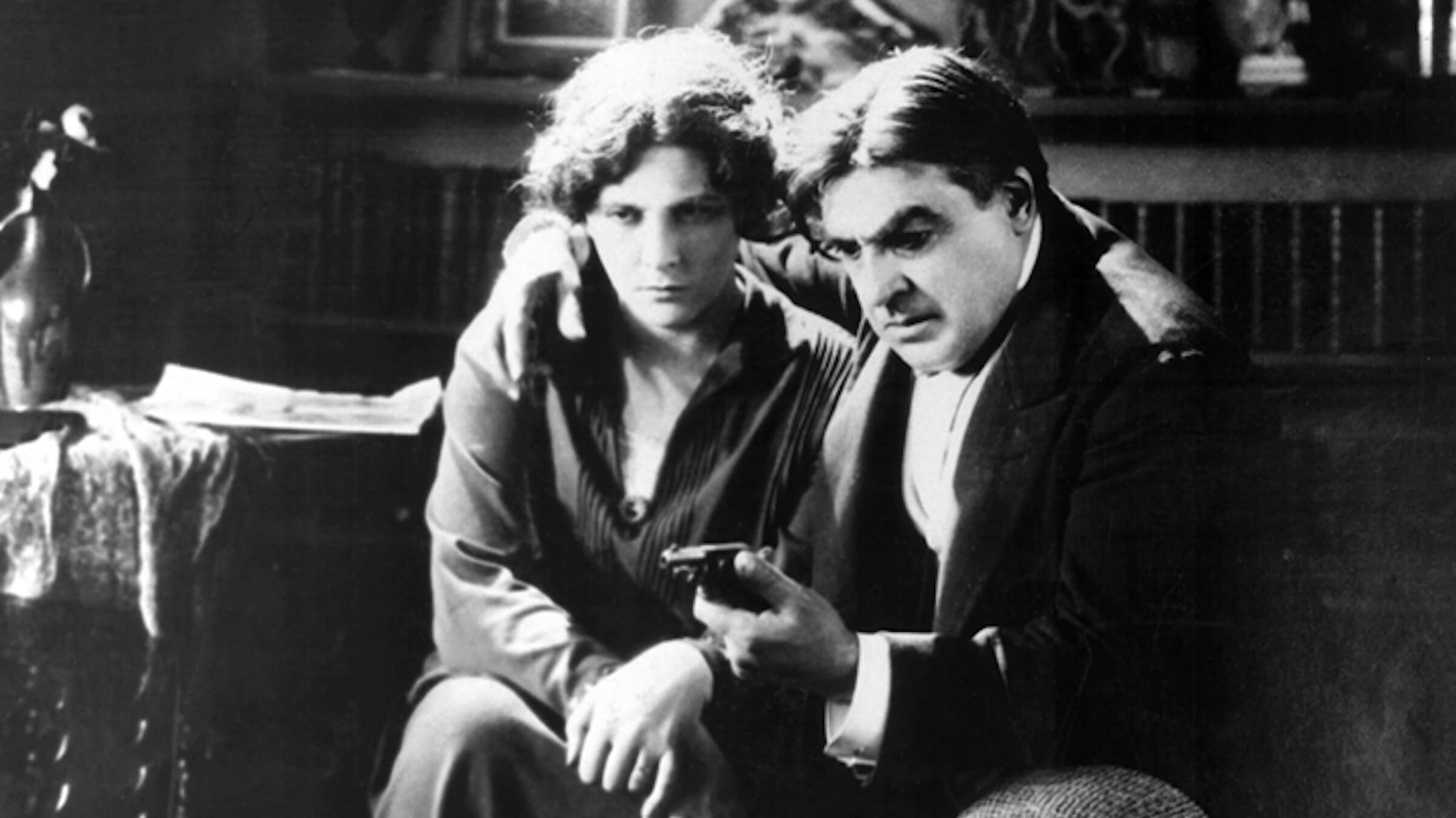The time has come, I believe, to listen in silence to our own song, to try to express our own personal vision, to define our own sensibility, to make our own way. Let us learn to look, let us learn to see, let us learn to feel. —Germaine Dulac, Let Us Have Faith (1919)
Germaine Dulac didn’t choose filmmaking as her first career, nor did she believe that directing was a job for women. Nevertheless, she made more than 30 films, had her own production company, wrote numerous articles on filmmaking, lectured, and founded and edited a cinema journal. Many of her works reflected her feminist stance and questioned the status quo of traditional women’s roles. Versatile, prolific, opinionated, and politically engaged, Dulac was among the most tireless practitioners and advocates of film as an independent art form in the history of cinema.
Born Germaine Saisset-Schneider in 1882, she grew up mainly in Paris, where she married Albert Dulac, worked as a journalist and theater critic for various feminist publications, and directed three feature-length films between 1916 and 1918. Her collaboration with film critic and theorist Louis Delluc on La Fête Espagnole (The Spanish Party, 1919) drew her increasingly closer to a vision of film as an independent art form with its own language. Soon she became a core member of a group of filmmakers associated with the avant-garde movement known as the impressionists.
Like the surrealist filmmakers who came later, the impressionist filmmakers paid careful attention to the use of framing, composition, camera angles, rhythmic editing, and effects such as slow motion, distorting lenses, dissolves, and superimpositions. Many of Dulac’s innovations of the early 1920s lay in her development of these techniques, often used to elucidate the emotional points of view of her female protagonists. The Smiling Madame Beudet (1923), the story of the frustrations and fantasies of a young wife and her boorish, domineering husband, is told almost entirely from the woman’s perspective. Her films La belle dame sans merci (The beautiful woman without mercy) and La morte du soleil (Death of the sun), embody a unique, critical perspective on the social position of contemporary women and offer wry commentary on the gender politics of marriage, adultery, and romance.
In the late 1920s, Dulac began an intense period of radical aesthetic exploration and innovation in a series of shorter, independently-produced, low-budget films. The Seashell and the Clergyman (1927) leaves plot and point of view behind altogether in order to explore the disruptive, obsessive, and irrational nature of desire. Many of her later short films were based largely on poetic juxtapositions of images and the formal play of light and dark forms—“visual symphonies,” free of story and rooted in movement and rhythm. For Dulac, these films embodied the possibilities of what she and others were calling “pure” or “integral” cinema, and, while they represent a small proportion of her overall oeuvre, they hold a seminal place in it.
The Seashell and the Clergyman is sometimes hailed as the first surrealist film (preceding Luis Buñuel and Salvador Dali’s Un Chien Andalou by more than a year), though the surrealists themselves welcomed neither the film nor Dulac into their fold. The film’s three figures play out a complex dance of desire, fantasy, and frustration in a number of eclectic scenes and bizarre settings with no logical explanation or connection, though some critics interpret them as the staging of an oedipal drama. Playwright, essayist, and actor Antonin Artaud wrote the script, in the hope of codirecting the film and playing the role of the clergyman. Dulac, however, insisted on directing the film alone. As Artaud was obligated to complete his performance in The Passion of Joan of Arc and director Carl Dreyer refused to let him leave for the period of Dulac’s scheduled filming, she hired another actor. Tension surrounding the interpretation of the script further exacerbated their strained relationship. The film’s premiere in February of 1928 was greeted with a barrage of insults that disrupted the screening. Artaud had envisioned his script as “a film of pure images,” and although Dulac assiduously followed the script, Artaud and others criticized the resulting film for an over-reliance on special effects that they felt tamed the intended violence of his text. Subsequently, Artaud praised the film and acknowledged that it was “a precursor.” Other critics have also since revisited their initial condemnation of the film. It continued to play in Paris for several weeks and on the alternative film circuit throughout Europe, though it was banned by the British Board of Censors.
In 1928, Dulac made her last commercial feature, The Princess Mandane. From 1931 on, she dedicated herself almost exclusively to the production of newsreels and nonfiction films, founding and overseeing Gaumont’s newsreel division. The hour-long Cinema in the Service of History (1936), composed of archival footage with a voice-over narration extolling the potential of film to record history, is one of her last completed films, and many of her writings of the 1930s address the educational potential of the newsreel and documentary film.
Dulac’s last years were much less productive due to illness. She died during the German Occupation in 1942, at the age of 59. As a feminist filmmaker working across genres, as an educator and advocate, and as a passionate explorer of cinematic form, her legacy is enormous.
Shown with: The Seashell and the Clergyman (La coquille et le clergyman), France, 1927 • Directed by Germaine Dulac
Presented at SFSFF 2003 with live music by Michael Mortilla

